 Facebook
Facebook
 X
X
 Instagram
Instagram
 TikTok
TikTok
 Youtube
Youtube
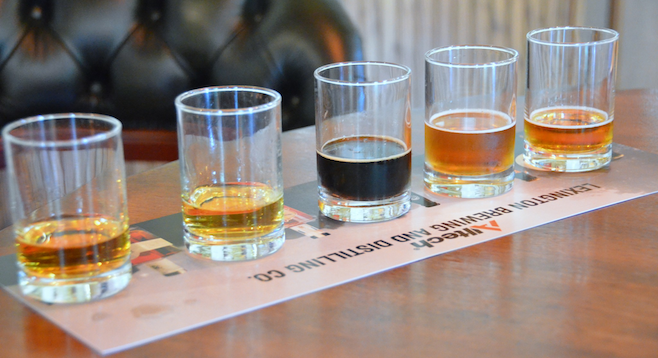
Billed as the “Horse Capital of the World,” Lexington, Kentucky, is also home to some of the world’s greatest bourbon. And, surprisingly, it hosts a robust, thriving food scene, showcasing an innovation more typical of the American coasts. Predictably, I was hooked and decided to check it out.
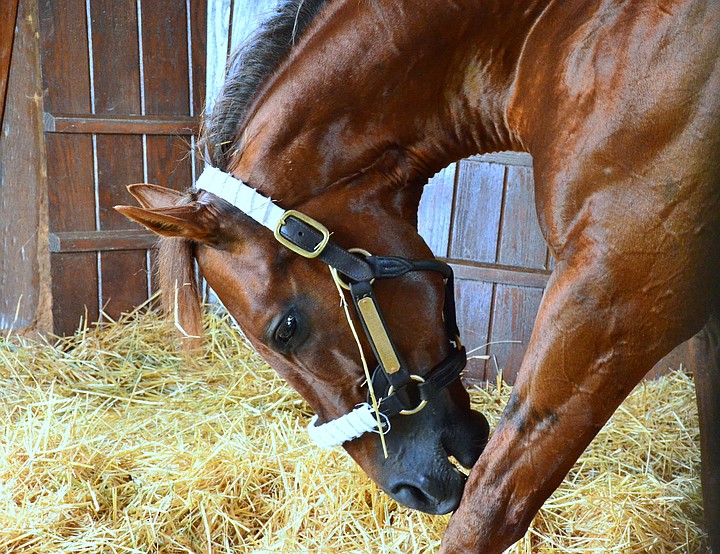
Horse capital of the world
I was blown away by The International Museum of the Horse, a Smithsonian Affiliate that “explores man’s relationship with the horse throughout history.” I could have spent all day in this museum alone. But with only a couple hours to spend at the entire complex (entirely insufficient), I still wanted to check out the Kentucky Horse Park.
The only one of its kind in the world, the Park is where you can get up close and personal with working and retired horses. Located on more than 1,200 acres in the heart of the Bluegrass Region, it's got something for everyone. The Hall of Champions is the place to pay tribute to retired racing mavens, while you can see dozens of breeds in the Horses of the World Show. If time permits, take a ride with draft horses on the Horse Drawn Tour, and if you have kids, be sure to check out the Kids Barn.
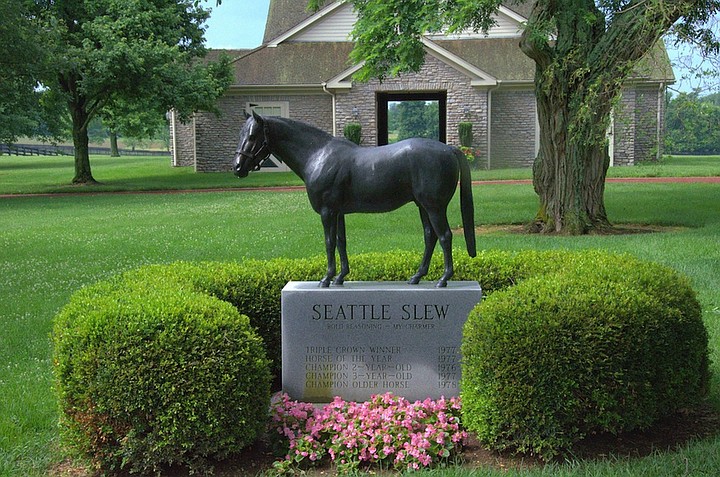
After the museum, schedule a horse farm tour – after all, where else in the world can you do this? I toured the stallion complex at Three Chimneys Farm. Founded in 1972, Three Chimneys Farm incorporates approximately 2,300 acres of land split among seven divisions and is open to the public. It is the home of 11 world-class stallions, including Big Brown, 2008 Kentucky Derby Winner, and some of my favorites: Ice Box, Sky Mesa and Exchange Rate. (Stud fees for the stallions range from $3,000–$20,000).
Bourbon: America’s native spirit
The beginnings of bourbon are somewhat murky, but what's known is that in the late 1700s, some Scotch and Irish immigrants started distilling whiskey in western Pennsylvania. Whiskey soon became the bartering unit in most frontier economies, as cash was usually in short supply.
By the end of the Whiskey Rebellion in 1794, many distillers had moved to Bourbon County in what was then the state of Virginia. Eventually it would become Kentucky. Distillers first used rye and other grains, but when they couldn’t grow or find enough, they eventually turned to corn. Corn whiskey became a booming business.
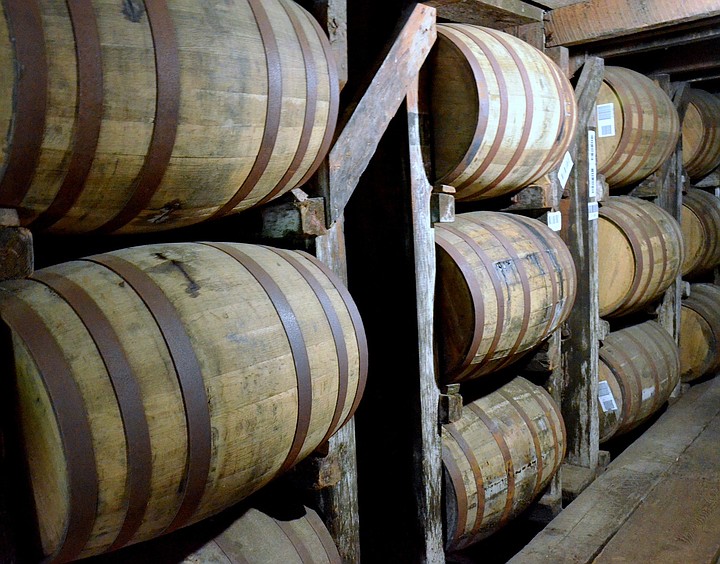
In 1964, Congress declared that bourbon was the United States’ official distilled spirit, noting that it had a distinctive flavor and caramel coloring. In doing so, Congress established the ABC’s of what sets bourbon apart from whiskey. These are: a) bourbon must be “aged” for a minimum of two years; b) the “barrels” must be new and charred; and c) “corn” must constitute a minimum of 5l% of the distillery process. Today, Kentucky is the only state with the legal right to put its name on bourbon products. And about 95% of all bourbon is made in Kentucky. While I was in Lexington, I headed for tours of two of the top distilleries.
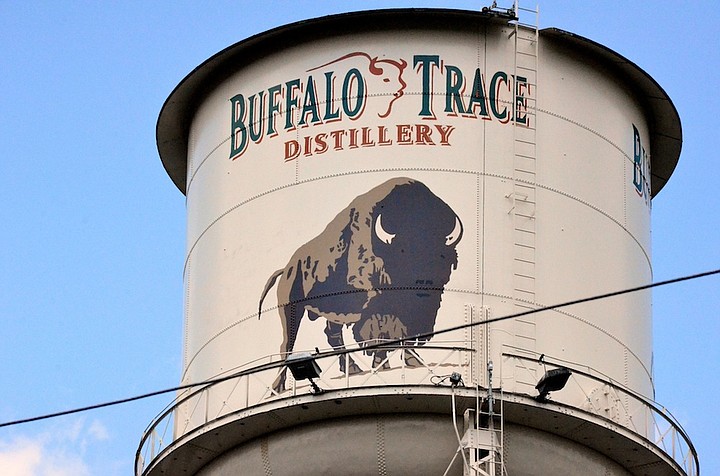
Buffalo Trace Distillery has been in operation for over 200 years with the goal of making fine bourbon whiskey. Because they've honored tradition while embracing change during their journey, they are considered to be some of the best at their craft. This is a must do tour where you will learn all about the making of bourbon along with some great tastings at the end. It includes a comprehensive bourbon gift shop.
The Town Branch Distillery is another great tour located on the edge of the Distillery District. This is Alltech’s new $9.2-million distillery - the first to be built in Lexington in nearly 100 years. The Town Branch name pays homage to the limestone water below the ground and on which Lexington was founded. Inside the visitor center, Alltech has pulled together an outstanding educational tour about its bourbon. My favorite takeaway was the bourbon flavor wheel describing the different nuances bourbon can manifest. Don’t miss sampling their bourbon-infused coffee liqueur.
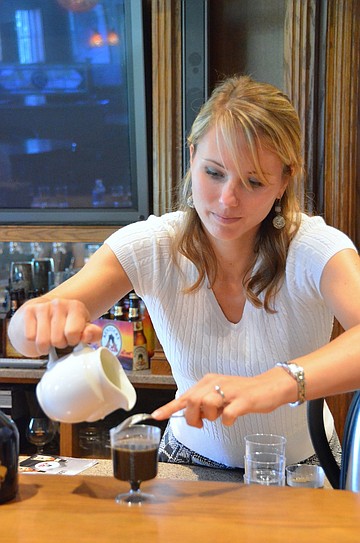
Lexington food scene
From food carts and gastropubs to regional cuisine and fine dining, it’s all here – and delivered by a generation of Lexingtonians who are well-traveled, erudite, and cosmopolitan in their understanding of food. They're also big on local sourcing and seasonal ingredients. The result is a farm-freshness in flavor, yet with a sophistication that spells Southern.
I spent a week in Kentucky foodie heaven, tasting and sipping a mind-boggling gamut from grits, biscuits, beignets and bourbon-encrusted salmon to mint juleps, crafted beer and more bourbon. Here’s a quick rundown of where to go for breakfast, brunch, lunch and dinner while in Lexington.
For breakfast or brunch:
Doodle’s. This is an eco-friendly, New Orleans–inspired brunch spot that proudly features local Kentucky products. Great food that's easy on the wallet.
Windy Corner Market and Restaurant. Smack in the middle of luxuriant horse farms, this place “honors local farmers and great food.” The chef/owner Ouita Michel features Kentucky ingredients in her recipes and also sells Kentucky foodstuffs from her market shelves. The menu prominently features po-boy sandwiches on locally made brioche.
The Shakespeare and Co. This is the restaurant for those who want loads of choices. With a menu the size of a glossy magazine, they feature a wide array of comfort food ranging from eggs Benedict to tasty salads and sandwiches.
The Village Idiot. This is Lexington’s first gastropub – where “high-end” food is offered in a pub-like setting. Locally sourced food highlights the menu with an outstanding selection of craft beer along with wines and cocktails.
For lunch or dinner:
CountyClub is “committed to exploring and expanding the American tradition of smoking meats using hardwoods and low temperatures. It examines barbecue classics by utilizing responsibly raised Kentucky cow, hog, sheep, goat, and chicken while applying flavor traditions from around the world.” Their specials are always a winner.
Heirloom offers an emphasis on heirloom produce and locally grown ingredients. Try the Mary Burger with heirloom fries. Apparently, Johnny Unitas traveled from Baltimore just to get the Mary Burger, a recipe from Chef Mark’s Grandmother.
Jonathan at Gratz Park. Chef/owner Jonathan Lundy is a Kentucky native who counts his great, great, great grandfather William Monroe Wright as the founding owner of Calumet Baking Powder Company. This elegant place is an authentic Kentucky dining experience within Gratz Park Inn, the heart of Lexington’s oldest historic district. Ask about his “bourbon-inspired” specials.
Dudley's Restaurant. A mainstay since 1981, the restaurant is known for its award-winning creative American cuisine.
Jean Farris Winery and Bistro. A family-owned vineyard and restaurant, the place reflects a passion for fine cuisine and great wine. Many of the culinary herbs, heirloom tomatoes, and fresh vegetables and fruits are grown on their estate.
Coles 735 Main. A cheery provencal décor greets diners with a menu that emphasizes locally sourced ingredients with an eclectic flair. Executive Chef Cole Arimes accentuates passion, artistry and variety in all his dishes.
Where to stay: Southern luxury downtown
Of course you'll want to stay in a place that is historically unique to Lexington and oozes with Southern hospitality: that place is The Gratz Park Inn, located in the heart of downtown. Many of the restaurants listed above are within a short walking distance of the hotel. My favorite feature was the poster queen bed with Tempur-Pedic mattress; it made for some pretty restful nights.


Billed as the “Horse Capital of the World,” Lexington, Kentucky, is also home to some of the world’s greatest bourbon. And, surprisingly, it hosts a robust, thriving food scene, showcasing an innovation more typical of the American coasts. Predictably, I was hooked and decided to check it out.

Horse capital of the world
I was blown away by The International Museum of the Horse, a Smithsonian Affiliate that “explores man’s relationship with the horse throughout history.” I could have spent all day in this museum alone. But with only a couple hours to spend at the entire complex (entirely insufficient), I still wanted to check out the Kentucky Horse Park.
The only one of its kind in the world, the Park is where you can get up close and personal with working and retired horses. Located on more than 1,200 acres in the heart of the Bluegrass Region, it's got something for everyone. The Hall of Champions is the place to pay tribute to retired racing mavens, while you can see dozens of breeds in the Horses of the World Show. If time permits, take a ride with draft horses on the Horse Drawn Tour, and if you have kids, be sure to check out the Kids Barn.

After the museum, schedule a horse farm tour – after all, where else in the world can you do this? I toured the stallion complex at Three Chimneys Farm. Founded in 1972, Three Chimneys Farm incorporates approximately 2,300 acres of land split among seven divisions and is open to the public. It is the home of 11 world-class stallions, including Big Brown, 2008 Kentucky Derby Winner, and some of my favorites: Ice Box, Sky Mesa and Exchange Rate. (Stud fees for the stallions range from $3,000–$20,000).
Bourbon: America’s native spirit
The beginnings of bourbon are somewhat murky, but what's known is that in the late 1700s, some Scotch and Irish immigrants started distilling whiskey in western Pennsylvania. Whiskey soon became the bartering unit in most frontier economies, as cash was usually in short supply.
By the end of the Whiskey Rebellion in 1794, many distillers had moved to Bourbon County in what was then the state of Virginia. Eventually it would become Kentucky. Distillers first used rye and other grains, but when they couldn’t grow or find enough, they eventually turned to corn. Corn whiskey became a booming business.

In 1964, Congress declared that bourbon was the United States’ official distilled spirit, noting that it had a distinctive flavor and caramel coloring. In doing so, Congress established the ABC’s of what sets bourbon apart from whiskey. These are: a) bourbon must be “aged” for a minimum of two years; b) the “barrels” must be new and charred; and c) “corn” must constitute a minimum of 5l% of the distillery process. Today, Kentucky is the only state with the legal right to put its name on bourbon products. And about 95% of all bourbon is made in Kentucky. While I was in Lexington, I headed for tours of two of the top distilleries.

Buffalo Trace Distillery has been in operation for over 200 years with the goal of making fine bourbon whiskey. Because they've honored tradition while embracing change during their journey, they are considered to be some of the best at their craft. This is a must do tour where you will learn all about the making of bourbon along with some great tastings at the end. It includes a comprehensive bourbon gift shop.
The Town Branch Distillery is another great tour located on the edge of the Distillery District. This is Alltech’s new $9.2-million distillery - the first to be built in Lexington in nearly 100 years. The Town Branch name pays homage to the limestone water below the ground and on which Lexington was founded. Inside the visitor center, Alltech has pulled together an outstanding educational tour about its bourbon. My favorite takeaway was the bourbon flavor wheel describing the different nuances bourbon can manifest. Don’t miss sampling their bourbon-infused coffee liqueur.

Lexington food scene
From food carts and gastropubs to regional cuisine and fine dining, it’s all here – and delivered by a generation of Lexingtonians who are well-traveled, erudite, and cosmopolitan in their understanding of food. They're also big on local sourcing and seasonal ingredients. The result is a farm-freshness in flavor, yet with a sophistication that spells Southern.
I spent a week in Kentucky foodie heaven, tasting and sipping a mind-boggling gamut from grits, biscuits, beignets and bourbon-encrusted salmon to mint juleps, crafted beer and more bourbon. Here’s a quick rundown of where to go for breakfast, brunch, lunch and dinner while in Lexington.
For breakfast or brunch:
Doodle’s. This is an eco-friendly, New Orleans–inspired brunch spot that proudly features local Kentucky products. Great food that's easy on the wallet.
Windy Corner Market and Restaurant. Smack in the middle of luxuriant horse farms, this place “honors local farmers and great food.” The chef/owner Ouita Michel features Kentucky ingredients in her recipes and also sells Kentucky foodstuffs from her market shelves. The menu prominently features po-boy sandwiches on locally made brioche.
The Shakespeare and Co. This is the restaurant for those who want loads of choices. With a menu the size of a glossy magazine, they feature a wide array of comfort food ranging from eggs Benedict to tasty salads and sandwiches.
The Village Idiot. This is Lexington’s first gastropub – where “high-end” food is offered in a pub-like setting. Locally sourced food highlights the menu with an outstanding selection of craft beer along with wines and cocktails.
For lunch or dinner:
CountyClub is “committed to exploring and expanding the American tradition of smoking meats using hardwoods and low temperatures. It examines barbecue classics by utilizing responsibly raised Kentucky cow, hog, sheep, goat, and chicken while applying flavor traditions from around the world.” Their specials are always a winner.
Heirloom offers an emphasis on heirloom produce and locally grown ingredients. Try the Mary Burger with heirloom fries. Apparently, Johnny Unitas traveled from Baltimore just to get the Mary Burger, a recipe from Chef Mark’s Grandmother.
Jonathan at Gratz Park. Chef/owner Jonathan Lundy is a Kentucky native who counts his great, great, great grandfather William Monroe Wright as the founding owner of Calumet Baking Powder Company. This elegant place is an authentic Kentucky dining experience within Gratz Park Inn, the heart of Lexington’s oldest historic district. Ask about his “bourbon-inspired” specials.
Dudley's Restaurant. A mainstay since 1981, the restaurant is known for its award-winning creative American cuisine.
Jean Farris Winery and Bistro. A family-owned vineyard and restaurant, the place reflects a passion for fine cuisine and great wine. Many of the culinary herbs, heirloom tomatoes, and fresh vegetables and fruits are grown on their estate.
Coles 735 Main. A cheery provencal décor greets diners with a menu that emphasizes locally sourced ingredients with an eclectic flair. Executive Chef Cole Arimes accentuates passion, artistry and variety in all his dishes.
Where to stay: Southern luxury downtown
Of course you'll want to stay in a place that is historically unique to Lexington and oozes with Southern hospitality: that place is The Gratz Park Inn, located in the heart of downtown. Many of the restaurants listed above are within a short walking distance of the hotel. My favorite feature was the poster queen bed with Tempur-Pedic mattress; it made for some pretty restful nights.